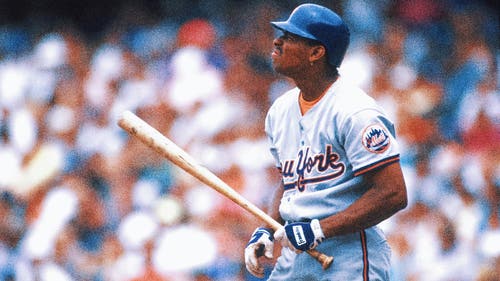
Yankees' 1-year deals don't help team
Rarely has a team spent so much to improve so little.
Over the past month, the New York Yankees have invested $49 million in one-year contracts for four free agents: Hiroki Kuroda, Andy Pettitte, Mariano Rivera and most recently Kevin Youkilis. That is close to what the Oakland Athletics spent on an entire division-winning roster this year. But even after handing out that sum of money, the Yankees can’t argue that they are better now than they were when the Detroit Tigers swept them out of the American League Championship Series.
Pettitte turns 41 in June. Kuroda will be 38 by the time spring training begins. The Yankees hope each is as good in 2013 as he was this year.
Rivera is coming off a catastrophic knee injury. He’s the greatest closer of all time. He’s also 43 years old. It’s hard to imagine the 2013 Rivera will be better than the 2012 Rafael Soriano, who recorded 42 saves with a 2.26 ERA and is now a free agent.
Youkilis? He is the early-season — and maybe full-season — replacement for Alex Rodriguez at third base. Prior to his farcical postseason, A-Rod had an above-average 2012 by the diminishing standards of major league third basemen. His OPS was .783. The mean was .753.
Youkilis’ was .745.
So, again, let’s ask the question: How have the Yankees improved this winter?
The answer is they haven’t.
For Yankees fans, the near- and medium-term outlooks are unsettling. The team’s next move will probably be re-signing Ichiro Suzuki to play right field. Ichiro performed well in New York — a .794 OPS — after coming over from Seattle in a July trade. But he’s no longer a difference-maker at age 39.
Ichiro is expected to sign a one-year contract. Notice a trend?
The Yankees are headed for the Bronx version of the Fiscal Cliff. Hal Steinbrenner has made public his intent to keep the payroll below the $189 million luxury tax threshold beginning in 2014. This is the transition year, as the Yankees are trying to shoehorn their extravagant past and austere present within the confines of a 25-man roster. The result is a tighter fit than a Manhattan studio apartment.
The strategy of general manager Brian Cashman has been to slightly overpay free agents on one-year contracts in order to keep them off the books for 2014. That has prevented the Yankees from signing high-dollar, multiyear free agents — so far. (We must leave open the possibility that the Old Yankees return, delivering Josh Hamilton and Anibal Sanchez on the very same day.)
The Yankees, coming off a season in which they led the American League with 95 wins, will compete for the division title in 2013. They are going to carry a payroll of around $200 million — once more, for old time’s sake — and should benefit from salary drives for free-agents-to-be Robinson Cano and Curtis Granderson. But it appears they won’t fulfill the longtime Steinbrenner mandate: dominate the offseason back pages and drink champagne in October.
The problem, such as it is, will be exacerbated at this time next year. To build a championship team around the enormous contracts of Rodriguez, Mark Teixeira, CC Sabathia and Derek Jeter, Cashman will need homegrown players on reasonable salaries — players like Austin Jackson, Ian Kennedy and Phil Coke, who were traded for Granderson three years ago.
It’s not that Cashman made a mistake by acquiring Granderson. He finished fourth in the AL MVP balloting last year and has hit the most home runs in baseball over the past two seasons. But Granderson was the archetype for the Yankees’ old model; if they missed Jackson, Kennedy and Coke, well, they could blow up the budget and buy replacements.
No more, Hal says. So, what was the correct decision under the old rules could be scored an E-Cashman one year from now.
There’s a failsafe solution to most roster-related quandaries in baseball, as we learned again this week: If your farm system is rich enough — see Kansas City and Cincinnati — then the player you covet can be one trade away. The Tampa Bay Rays weren’t going to help the division-rival Yankees by sending James Shields to the Bronx. But you can bet the Cleveland Indians would have traded Shin-Soo Choo to the Yankees if they put together the right prospect package.
Apparently, they couldn’t. Today, Choo — a more dynamic outfielder than Ichiro or Brett Gardner — is a Cincinnati Red.
The trade market is telling that way. Forget the prospect rankings and oft-repeated opinions of anonymous scouts. If you have legitimate young talent, other GMs will want to trade with you in November, December and January. And in that respect, Cashman has had a quiet winter. With Nick Swisher a free agent, the Yankees need a power bat for the outfield. Justin Upton, Jason Kubel and Mike Morse are available. Why hasn’t Cashman acquired one of them?
Well, some top prospects have been traded (Jesus Montero) and others (Dellin Betances, Manny Banuelos) have suffered injuries or underperformed. And the timing couldn’t be worse. If one acknowledges that Rodriguez will earn $26 million and make a negligible contribution in 2014 — to say nothing of the coming season — then the Yankees will (purportedly) operate that year with a nominal $163 million payroll.
Hardly destitute, I know. But it’s much more in line with the rest of the sport’s wealthy franchises. For years, a large part of the Yankees’ identity has been the notion that they spend more money than every other team in baseball. When superstar free agents become available, they pick up the check. It’s a point of pride. It’s also good business, when considering their robust revenues and the record 17 postseason appearances in 18 years.
Now, the mighty Yankees are using their pinstriped checkbook for one-year contracts — a subtle acknowledgement that the empire’s most opulent days are gone.










